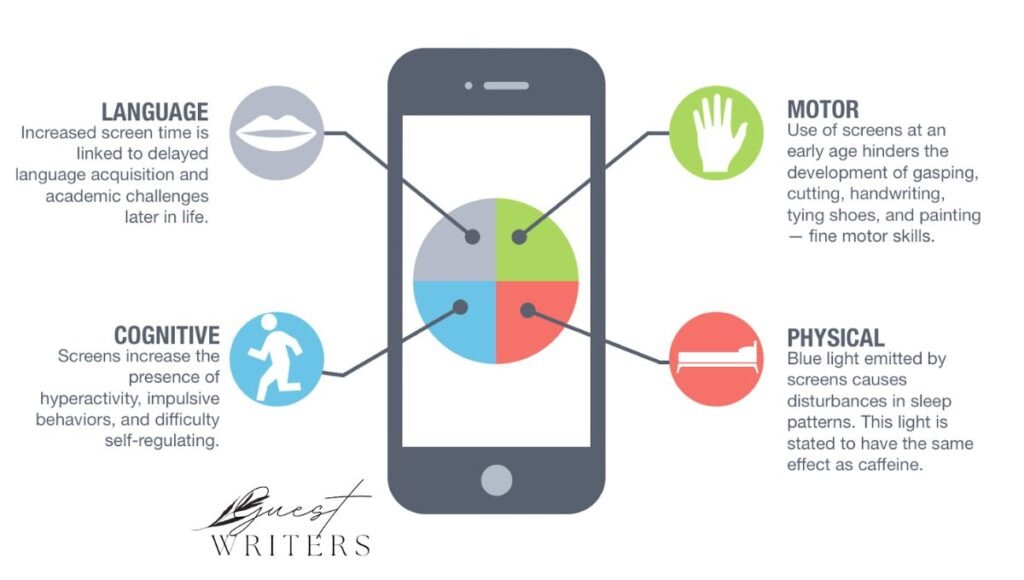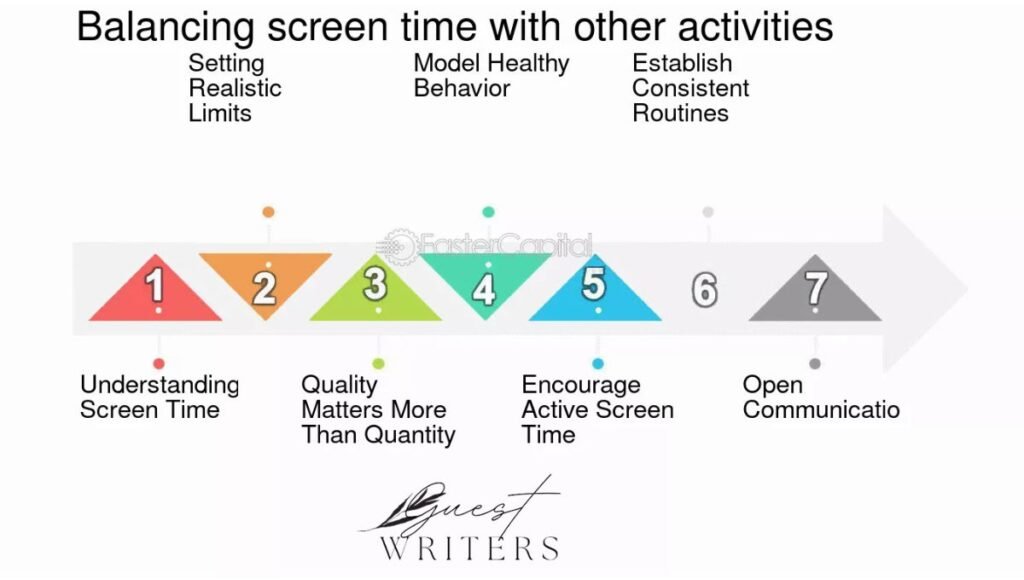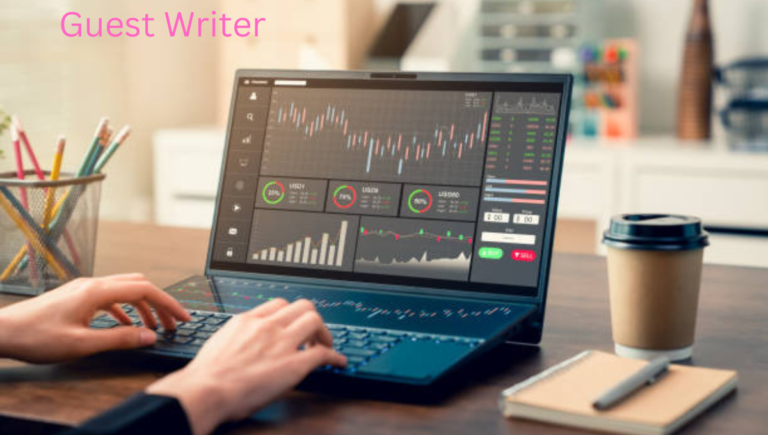Table of Contents
ToggleIntroduction
With the advancements in technology the importance of moderating the screen on spent in the modern world is a big question mark for parents and educators alike. With the advancement in technology, and increased use of features such as the smartphone, the tablet and computer, there is the ever rising topic on the America that wonders how much screen time is adequate and safe for children. Concurrently, others have risen to the popularity of some neurological disorders and behaviors like Stimming and Screen Time a self-stimulatory activity. It is possible to trace some connections between these two subject fields at first glance they look quite different.
For the purpose of this blog, I will expand on Stimming and Screen Time as well as screen time and how they interact with one another and the different practical approaches on them that families and individuals can take advantage of. We will also point out the reader to the existing academic literature on this subject and also present some tips on how to achieve an optimal balance of the use of technology-based self-entertainment and safe natural forms of self-stimulation.
What Is Stimming?
Stimming is short for self-stimulatory behavior which means repetitive actions, movements or sounds that a person use when he wants to modulate their affect or incoming sensory information. This can involve flapping of the hands, a bouncing motion when sitting, or spinning, snapping of the fingers or making sounds. Many people confuse stimming with ASD, but such behavior is more widespread than that. However, everyone, both typical and atypical, does often do some types of stimming occasionally, mainly when they are anxious, excited, bored, or overwhelmed.
Common Types of Stimming
1. Motor stimming
Tasks of repetitive movements of body parts like head banging, rocking, spinning or flapping of hands.
2. Tactile stimming
Contact with objects or surfaces, rubbing or touching anything with one’s fingers, hands, arms etc.
3. Auditory stimming
Humming, grunting or tapping on any surface other than the recommended object.
4. Visual stimming
A practice of observing any light source, spinning objects, or watching moving pictures back and forth.
5. Olfactory and gustatory stimming
Smelling or tasting objects.
In some cases, stimming is the method by which some individuals deal with intense stimuli or modulating their mood. Some even use stimming to help them stay alert, to pass time to or even when they want to show their happiness.
What is the part of Screen Time?

Screen time is the total time a child spends in front of a screen, whether it is a mobile phone screen, tablet or television screen or computer screen. With the help of new gadgets installed children and adults are staying longer in front of their television sets and other electronic devices. Including time spent on education, American teenagers had 7.5 hours of screen time in 2020, and young children had 2 to 4 hours of non-education screen time.
Benefits of Screen Time
1. Access to educational resources
Screen time is useful in giving a passage to education content, resources, and learning.
2. Social connection
With social platforms, video call, and video games humanity is able to be connected to someone.
3. Entertainment
In videos, games have turn into means of fun and relaxation.
Downsides of Excessive Screen Time
1. Physical health risks
Long hours spent on screen are known to cause obesity, sleep disturbances and eye strain.
2. Mental health concerns
Studies show that the ill effects of extended screen time are signs of anxiety, depression, and poor Regulation of emotions.
3. Reduced physical activity
A lot of the time is consumed on electronic devices in place of physical activity which is so important for the body and soul.
Combining Autistic Stimming with Technology Time
Stimming and Screen Time are related but it is not clear cut. For some, screen-based activities are possibly stimming in that they seem to provide the benefit of repetitive visual or auditory input. Such things like watching the same video over and over or tapping on a screen is similar to stimming behaviors; playing the same video game time and time again because it has on setting that does not change.
Has the use of technology solved the problem of stims or is there something better which can fill the gap created by the unnecessary touching of objects or other stimuli?
When it comes to persons who stim to mitigate issues with sensory input or anxiety, screen time can, at some point, suffice. Maybe watching videos, playing video games or using apps can offer the exact repetitive sensory feedback stimulation that some people need while stimming. It is like how children who watch a particular scene over and over in a movie get that familiar repetitiveness that they get from conventional stimming where one might rock or flap his hands.
Nevertheless, this kind of substitution is not without its problems. Electronic stimming can be sensory overload in terms of light, change of perspectives and objects of vision or loud sounds. While some people may find such recourse helpful in reducing stress or completely escaping it, others may actually find that using electronics raises their stress level, unless the use of electronics is regulated.
Screens as a Stimming Tool
1. Predictability
Some videos or apps may focus around a specific video content/app being highly structured and will bring comfort and calming to anyone who requires it through repetitive sensory input.
2. Accessibility
The two are portable devices where people can stim anytime, which is less conspicuous as compared to other forms of electronic gadgets.
3. Variety
In this case, there are various types of media in existence that may favor a specific kind of sensation.
4. Overstimulation
Amount of time spent using screens also results to sensory overload since the devices emit bright lights, the pictures displayed move fast and there are always beeping sounds.
5. Addiction
Risk People that use screen time for stimming can have challenge in separating from it hence being prone to screen dependency.
6. Sleep disruption
Too much watching time, particularly before going to bed, has an effect of suppressing the body’s production of natural sleep inducer, melatonin.
Understanding the Science Screen Time and Hand Flapping, And Quality Of Life
There are numerous other published works of research that have investigated the link between screen times in particular and behavior regulation – including Stimming and Screen Time. According to the article published in the JAMA Pediatrics in 2018, children who used more than two hours of screen time per day had worse and lower cognitive and “executive” functions than their peers who had limited screen time. In the same way, Children, Parents, and the Environment study revealed correlations between greater screen time and emotional self-organization issues.
It can be seen that the use of screen time is a two edged sword in the case of individuals with autism. A few understand that a controlled screen time or in special cases screen can boost social skills especially if they involve in an educational program this on the other hand few understand that a high use of screen can worsen behaviors such as hyperactivity, irritability and stimming.
Such a state should be maintained in order to keep in mind that screen time should contribute to the healthy development rather than interfere with it from the aspect of the child’s regulation.
Tips for Balancing Screen Time and Stimming

1. Create a Routine
Set some time in the day to allow the child to use tablets but must be followed by off tablet time activities such as going outside to play, or engaging in activities such as bouncing on a ball, or playing with fidget toys, or sensory blobs.
2. Limit Screen Time
The AAP thinks that children, especially those aged 2 to 5 years old, should spend no more than one hour watching TV or playing games in a day, and this, as well as for children of bigger age, should have certain and stable limits to let the screens do not take the time needed for proper physical activity, rest, and communication.
3. Encourage Physical Stimming
Promote types of stimming that include movement or touch, such as spinning, squeezing items in the hand or playing with kinetic sand. These can reduce screen stimming with healthy screen break and healthy screen time proposals.
4. Provide Alternative Sensory Input
Limiting screen use and presenting other options for stim observing the use of visually calming items like lava lamps, or light up toys can help to somewhat mitigate screen reliance while stimming.
5. Monitor for Overstimulation
If your child becomes more aggressive, easily distracted or has problems sleeping do not underestimate that it could well be as a result of over-stimulation from the screen time. Change it depending on the instructions of the teacher.
6. Engage in Co-viewing
You watch your favorite show with your child or play games together and then explain what is going on. It may help create more of a social function to screen time — turning what could be an isolating activity into one that brings people together.
A Practical Approach Striking a Balance between Digital Use and Cogitative Interaction
To provide practical insights into managing Stimming and Screen Time, we present a comparison between recommended screen time and common forms of stimming activities for various age groups
The following table is a reference that shows the correlation between times spent on screen and equal or opposite amount of time spent on physical or mentally engaging activities that offer similar effect to stimming.
| Age Group | Recommended Daily Screen Time (AAP) | Common Stimming Behaviors | Suggested Balance Activities |
| 2-5 years | 1 hour | Hand-flapping, spinning, rocking | Sensory play (e.g., water or sand), outdoor play, story time |
| 6-12 years | 1-2 hours | Finger-tapping, fidgeting, visual stimming | Board games, drawing, physical exercise (e.g., running, jumping) |
| Teens (13-18) | 2-3 hours | Auditory stimming, repetitive video watching | Group sports, hiking, mindfulness exercises |
| Adults | Varies | Tapping feet, nail-biting, scrolling through social media | Yoga, journaling, walking, creative hobbies (e.g., painting, music) |
Conclusion
Today, with the rising use of technology and all those gadgets, it becomes very important for children and adults to know their hours of exposure to Stimming and Screen Time. Although the screen can offer much needed sensory stimulation and entertainment, it is crucial that other forms of tactile and emotional self-soothing is not mutually excluded. In so doing, the provision of limits, the inclusion of other activities, and avoiding overstimulation can be used to develop an approach that will benefit children as well as the adults in a particular family.
Read more about trending and other categories at Guest Writerss.















